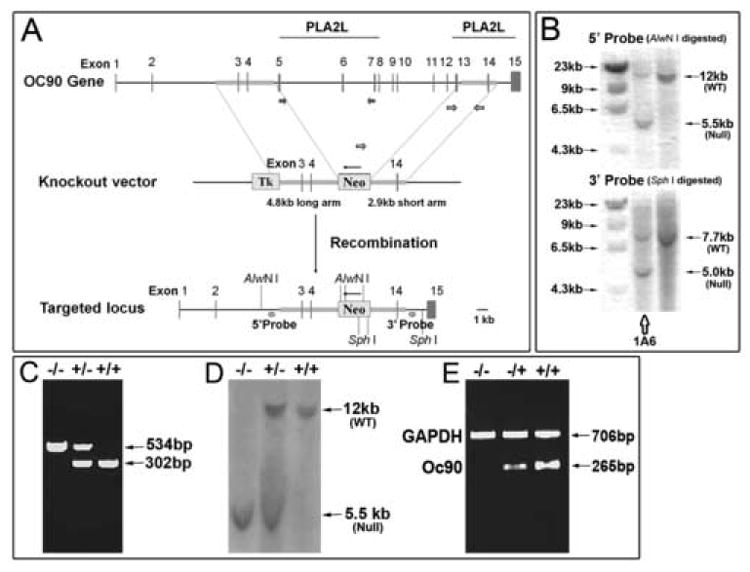Figure 1. Targeting the Oc90 gene.

(A) Design of the Oc90 targeting construct using the pPNT vector. Exons 5-13, spanning the entire first PLA2L domain and most of the putative functional region in the 2nd PLA2L domain, were deleted. The deletion creates an out-of-frame mutant transcript with 186bp due to a premature stop codon. Numbers indicate exons of the Oc90 gene and thin arrows directions of genes. (B) Confirmation of the initially identified positive clones by second-round Southern blotting. Clone 1A6 was used for injection of C57Bl6/J blastocysts. (C, D) Genotyping of Oc90 mutant pups by multiplex PCR (C) and Southern blotting (D) of tail DNA. PCR primers are denoted by unfilled block arrows in (A). (E) Inactivation of Oc90 transcript in Oc90 null mutants (1 month old) as confirmed by semi-quantitative multiplex RT-PCR analysis of inner ear tissues. Oc90 RT-PCR primers are located in the deleted region as denoted by filled block arrows in (A). Inactivation of Oc90 protein is shown in Figure 4E.
